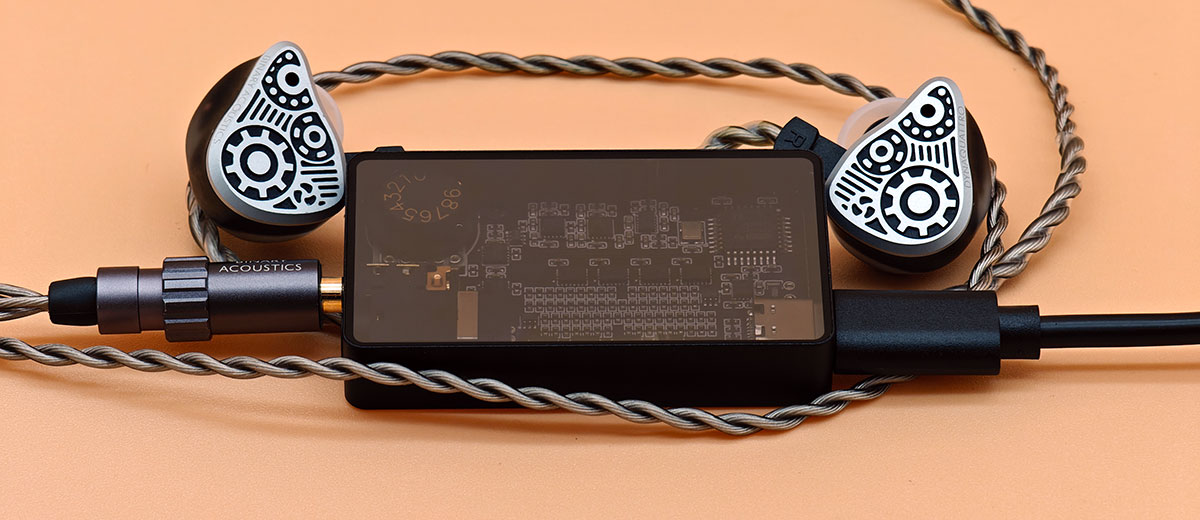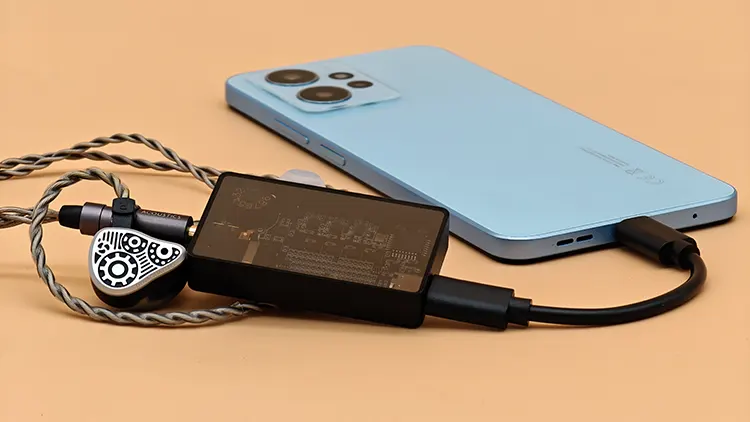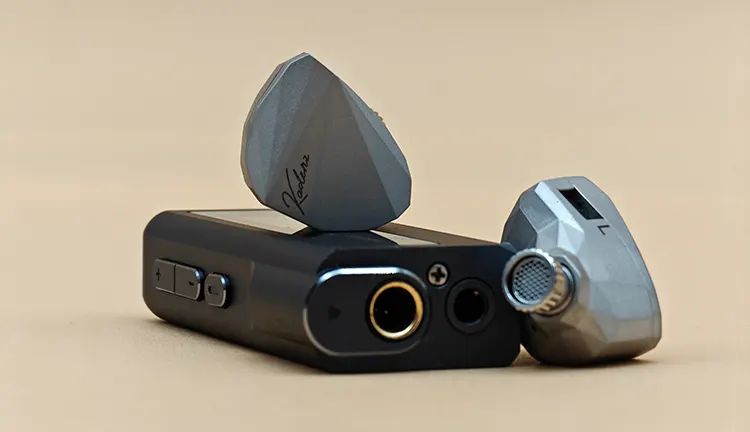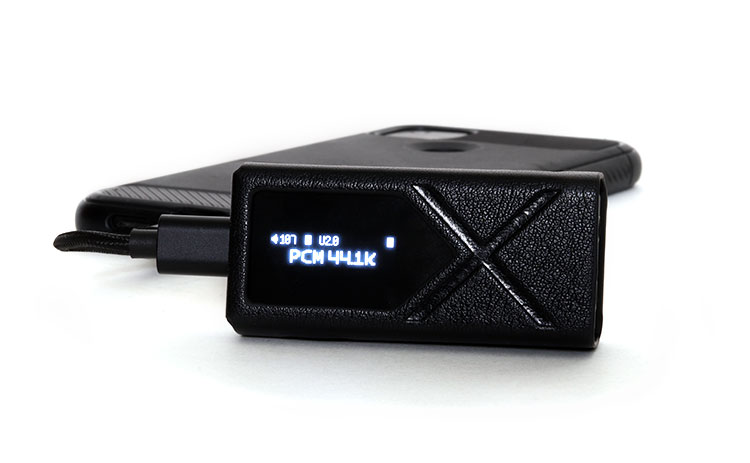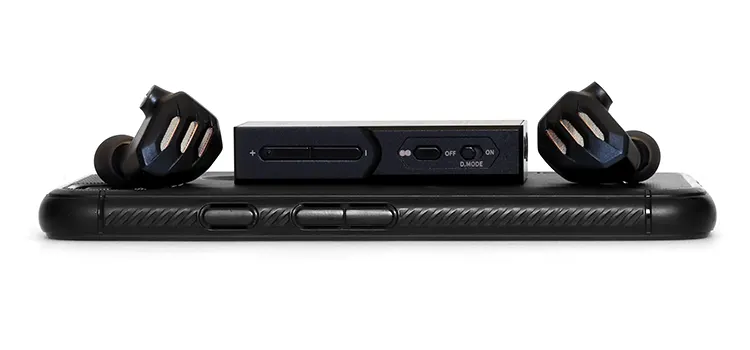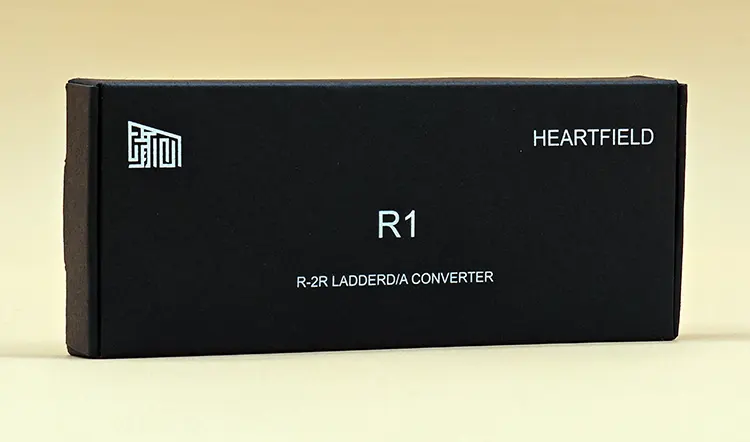Synergy
Power & Efficiency
The HeartField R1 comes with both a 4.4mm balanced and a 3.5mm unbalanced output, though no specific power ratings are provided. However, its output strength is impressive for such a compact R2R DAC amp, outperforming many of its peers.
Even without official power specs, I find that using the R1 at level 3 on the volume dial, combined with 100% volume from my DAP or stationary device, provides a powerful sound output. This setup allows for effective power handling, especially with the 4.4mm balanced connection.
For optimal efficiency and sound quality, I recommend users stick to the 4.4mm balanced output, as it provides a noticeable improvement over the unbalanced option.
This connection method fully utilizes the R1’s power capabilities while ensuring a stable, high-quality listening experience.
Pairings
I’ve paired the HeartField R1 with various IEMs, ranging from budget to high-end models, and including all types of driver configurations like single dynamic drivers (DD), full balanced armatures (BA), hybrids, and planar driver IEMs.
Each pairing demonstrated the versatility of the R1, as it consistently improved the sound quality compared to my chip-based DAC amps.
Across these pairings, the R1 enhanced the bass, mids, and timbre, delivering a richer and more cohesive listening experience. The R1’s analog warmth and clarity boost brought out details that were less noticeable on other DACs.
Using it with a single dynamic driver IEM like the Moondrop Kadenz produced a bassier and warmer sound profile. This pairing made the timbre more transparent and engaging, as the clarity boost complemented the IEM’s natural tone.
When paired with a full-BA IEM such as the HeartField Blanc, the R1 helped refine the timbre, making vocals sound more natural. This combination addressed some of the BA’s inherent tonality limitations, resulting in a smoother and more realistic presentation.
With a planar IEM like the LETSHUOER S12 Pro, the R1 tempered the IEM’s energetic treble and softened the strong planar timbre. While it didn’t entirely alter the timbre, it made the vocals more manageable and enjoyable with a tolerable treble.
Select Comparisons
Colorfly CDA-M2
Technical
The Colorfly CDA-M2 uses dual Cirrus CS43198 chipsets, supporting DSD256 and 32-bit/768kHz audio formats. This high-resolution capability ensures it can handle detailed, high-fidelity audio files with ease.
It has both 3.5mm unbalanced and 4.4mm balanced outputs, making it versatile for use with different devices. This setup allows users to connect a wide variety of headphones and IEMs without compatibility issues.
The 3.5mm unbalanced output can deliver up to 125 mW of power, while the 4.4mm balanced output reaches up to 250 mW. This range of power output makes it capable of driving higher-impedance headphones effectively.
Design
The Colorfly CDA-M2 has a CNC-machined aluminum body, giving it a durable, full-metal construction with glass components and zero plastic. This design choice not only enhances its aesthetic but also improves overall build quality.
The device includes a 1.3-inch OLED screen that displays essential information and control options. This OLED display, along with dedicated volume buttons and an extra button to turn the screen on or off, enhances the user experience.
The volume control also doubles as the settings control, allowing users to adjust gain settings for low- or high-power modes. This adaptability makes it suitable for various listening environments and headphone types.
Performance
The performance differences between the Colorfly CDA-M2 and the HeartField R1 are distinct, with each excelling in specific areas. The R1 emphasizes clarity and detail, while the CDA-M2 prioritizes a clean, distortion-free sound.
The HeartField R1 enhances clarity, bringing out hidden details in music that are less apparent on the CDA-M2. This makes the R1 particularly appealing for genres that benefit from detailed textures and nuanced soundscapes.
In contrast, the CDA-M2 excels in maintaining a consistently clean signal with zero distortion, even when connected to unshielded sources. This stable performance makes it ideal for environments where interference is common, ensuring reliable sound quality.
The CDA-M2’s lack of distortion also makes it well-suited for daily activities like gaming and video watching. With its clear output, users can enjoy immersive audio without distractions from unwanted noise or artifacts.
FiiO KA17
Technical
The FiiO KA17 uses dual ES9069Q DAC chips within a dual-mono configuration, delivering high-resolution playback with support for up to 32-bit/768kHz PCM, DSD512, and full MQA decoding.
The DAC is paired with an XMOS XU316 USB controller, enabling low-latency, high-bitrate processing.
Its THX-certified AAA 78+ amplifier section uses a multistage design with eight op-amps in a fully balanced setup, capable of outputting 650mW at 32Ω on the balanced connection.
This robust amplification setup ensures ample power for both IEMs and high-impedance headphones.
The power supply design includes a three-stage, 10-rail system with multiple Tantalum capacitors, which helps maintain a low-noise floor. This intricate power management keeps the output hiss-free and stable across various connected devices.
Design
The FiiO KA17 has a CNC-machined aluminum body with tempered glass covering the 0.91-inch OLED display, providing a premium feel. The device’s form factor is compact yet slightly thicker than typical dongle DACs, making it sturdy but less pocket-friendly.
It includes a protective leather case to address the sharp corners on the aluminum chassis, enhancing user comfort during portable use. This attention to detail improves usability while preserving the device’s rugged aesthetic.
With a rocker-style volume control and a USB-C input, the KA17 is simple yet functional, catering to users who appreciate minimalism. The dual headphone outputs (4.4mm balanced and 3.5mm single-ended) make it versatile for different setups and preferences.
Performance
The FiiO KA17 and HeartField R1 offer contrasting sound profiles, each suited to different listening preferences. The KA17’s delta-sigma DAC delivers a clean, accurate sound that is well-suited for critical listening and detailed playback.
In contrast, the HeartField R1’s R2R ladder DAC produces a warmer, more analog-like sound that enhances musicality. This makes the R1 ideal for genres that benefit from harmonic richness and a fuller audio experience.
The KA17 has a slight edge in power output, making it more capable of driving high-impedance headphones without distortion. However, the R1’s analog character is particularly enjoyable with sensitive IEMs, providing a textured and immersive sound.
While the KA17 prioritizes precision and clarity, the R1 leans towards warmth and tonal depth, offering a unique listening experience. Each device excels in its way, making the choice dependent on whether you value accuracy or musicality.
My Verdict
The HeartField R1, with its striking transparent design showcasing the R2R ladder architecture, lightweight build, 3.5mm and 4.4mm outputs, and unique analog sound, stands out as a distinctive choice for audiophiles.
It offers a warm, natural listening experience, making it ideal for users who value musicality over analytical precision in both portable and desktop settings.
Heartfield R1 Technical Specifications
- Dimensions: 59.2 x 33.5 x 11.5mm
- Weight: 19.8 grams
- Decoding Formats: Doesn’t support audio beyond 16-bit
- Headphone Jack: 3.5mm Unbalanced, 4.4mm Balanced
- Output Level: Not provided
- Maximum Output Power: Not provided

